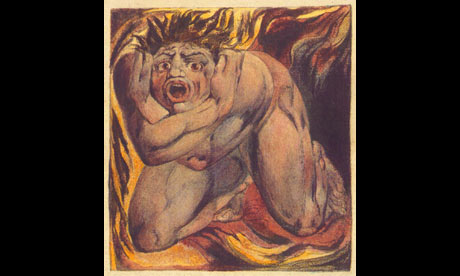‘And who was this William Blake? A wild sort of painter, was he not; or a poet of some kind; and at any rate, a strange sort of man?’*
The problem for rabid art bitches like me is that you can't dismiss the man. Although mired in a sea of preconceptions and substantial accusations of Blake's paucity of theory, skill and sanity, his contortion of the human form and mangling of the British language are rather exciting. Perceived in so many ways to be the teenaged pinup of a mad artistic genius, this authorship of the man in the most offensive thing about him.
Just as the Frida Khalo we know is a creation of second wave feminist art history, William Blake was created by the Victorian generation that followed him. The smoothing of Blake's hymns into the form of Jerusalem we know now took place in the Edwardian period and can be directly traced back to the work of Blake's Victorian lobbyists.
The Tate's purchase of 8 prints, some of them only exhibited once before, will be getting the teenager in every art fan tumescent. But it's also bringing out a lot of tired truisms and urban legends about the man. I would not argue that we should attempt any impossible mission into the impenetrable mists of time to discover the "real Blake", just perhaps accept a slightly more tempered approach to the man.
At the end of the day, is it really acceptable that respected and widely circulated sources such as the Guardian air the largely dismissed fantasy that Blake "sat naked in his London garden with Catherine, emulating what he saw as the lost innocence of Adam and Eve" as fact?
*John Camden Hotten caricaturing general public understand of Blake in, Review of ‘William Blake; A Critical Essay’, Illustrated Review, 1:13 (1871:Apr.), 436.

No comments:
Post a Comment